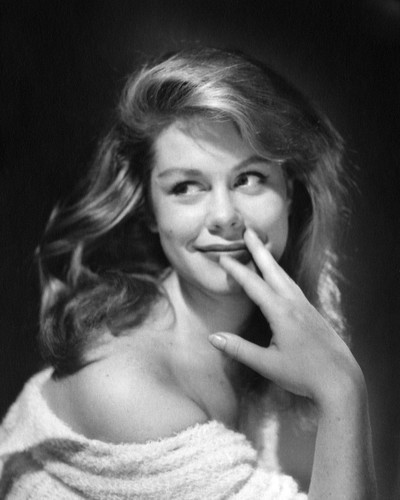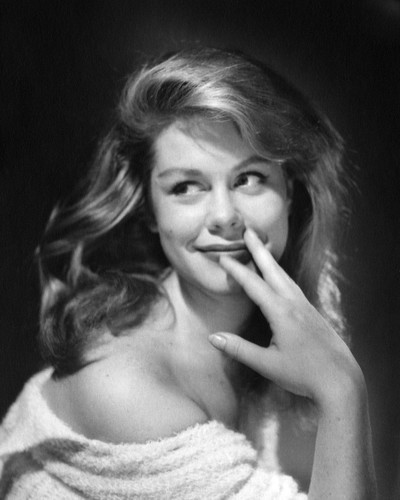ong before television’s beloved witch Samantha Stephens twitched her nose into American pop culture, Elizabeth Montgomery was already crafting a story far more complex than her magical alter ego ever revealed.
Born Elizabeth Victoria Montgomery on April 15, 1933, in Los Angeles, California, she came into the world surrounded by fame, artistry, and expectation. Her father, Robert Montgomery, was a dashing film star of the 1930s and ’40s, known for his sophistication and charm both on and off-screen. Her mother,
Elizabeth Bryan Allen, was a talented Broadway actress. For most people, such a pedigree might have guaranteed an easy path into Hollywood’s inner circle. But for young Elizabeth, it came with both privilege and pressure.
From an early age, she saw the glamour and the cost of fame. Her parents’ marriage was stormy, marked by distance and emotional strain. The Montgomery household was filled with ambition, but not always affection. In later interviews, Elizabeth admitted that she longed for approval from her father—a man she both admired and resented. That yearning for independence would become a defining force in her life.
She attended the Spence School in New York and later studied at the American Academy of Dramatic Arts, determined to prove that her talent—not her name—would open doors. Her natural charisma, expressive eyes, and emotional depth made her stand out even among a generation of talented young actresses.

Her first real break came in the early 1950s, not through her father’s influence, but through her own merit. She made her television debut on his anthology series, Robert Montgomery Presents
, and quickly captured attention with her sincerity and poise. Her performances were subtle yet magnetic—proof that she could hold her own in front of the camera.
Throughout the decade, she built her reputation in dramatic television, appearing in acclaimed series like
Alfred Hitchcock Presents, Studio One, and The Twilight Zone. She brought an emotional realism that resonated with audiences, whether playing a vulnerable ingenue or a woman on the edge.
By the early 1960s, Elizabeth had already earned an Emmy nomination for her role in the courtroom drama The Untouchables. She also appeared in films like The Court-Martial of Billy Mitchell
(1955) and Johnny Cool (1963), but it was television that would make her a household name—and change the trajectory of her life forever.

In 1964, ABC premiered Bewitched, a lighthearted sitcom about a witch who marries a mortal man and tries to live a normal suburban life. The premise was whimsical, but Elizabeth Montgomery’s performance gave it depth and humanity. As
Samantha Stephens, she was charming, witty, and endlessly relatable. Her signature nose twitch—a spontaneous gesture she developed on set—became one of the most iconic moments in television history.
Audiences adored her.
Bewitched became an instant success, running for eight seasons and earning her five Emmy nominations and four Golden Globe nods. But behind the laughter and special effects, Elizabeth was working tirelessly. She helped shape her character’s personality, pushing for Samantha to be portrayed as intelligent and independent rather than a submissive housewife.

Her marriage to William Asher, the show’s director and producer, was both a creative partnership and a source of tension. They shared three children and a love for storytelling, but the pressures of fame and production demands strained their relationship. When their marriage ended in 1973, Elizabeth was emotionally drained but creatively reborn.
Determined to prove her range, she began choosing roles that defied her wholesome image. In the 1974 television movie A Case of Rape, she portrayed a woman seeking justice after a brutal assault—a shocking and groundbreaking performance for the time. The film was one of the first to confront the realities of sexual violence on television and helped spark national conversations about women’s rights and victim advocacy. Elizabeth’s performance earned her widespread critical acclaim and an Emmy nomination.

She followed that with The Legend of Lizzie Borden (1975), in which she played the infamous woman accused of murdering her parents with an axe. The role was chilling, complex, and fearless—a complete departure from Samantha’s sunny suburban world. It was a revelation to audiences who had underestimated her.
Throughout the 1970s and 1980s, Montgomery continued to take risks. She starred in films that addressed controversial social issues—domestic abuse, racism, women’s independence, and the Vietnam War. Her commitment to realism and emotional truth resonated deeply with viewers.
Off-screen, Elizabeth was equally remarkable. Despite being a major star, she shunned Hollywood’s excesses. Friends described her as warm, witty, and down-to-earth, someone who preferred gardening, reading, and spending time with her children to glitzy red carpets. She was deeply empathetic and politically outspoken, lending her voice to causes long before celebrity activism became fashionable.

She marched for civil rights, supported the Equal Rights Amendment, and campaigned against the Vietnam War. In the 1980s and early 1990s, she became an early advocate for AIDS awareness, attending fundraisers and visiting patients when the disease was still heavily stigmatized.
In her personal life, she found lasting love later than most. After several marriages—including one to Asher—she met actor Robert Foxworth in the 1970s. Their bond was one of mutual respect and genuine affection. After nearly two decades together, they married in 1993. Foxworth would later describe her as “the most honest, generous soul” he had ever known.
Tragically, Elizabeth’s final years were marked by illness. In 1995, she was diagnosed with colon cancer, a battle she kept private from the public. Even in her final months, she refused to let the disease define her. She continued working and spending quiet time with her family in her Beverly Hills home.

On May 18, 1995, Elizabeth Montgomery passed away peacefully at the age of 62. Her death shocked fans around the world who had grown up with her warmth, humor, and charm. In one of her last interviews, she had said: “I’ve had a wonderful life. I don’t want to be remembered as a witch—I want to be remembered as a woman who did good work, who loved her family, and who cared.”
Today, she is remembered as all of that and more. Her portrayal of Samantha Stephens remains one of television’s most beloved performances, but her legacy stretches far beyond the magic of Bewitched. She broke barriers for women in entertainment, fought for social justice, and lived with authenticity in an industry that often demands illusion.
Elizabeth Montgomery’s magic wasn’t in the spells she cast on-screen—it was in her courage, her empathy, and her unshakable sense of self. She taught a generation that strength could be graceful, and that kindness could be powerful.
Nearly three decades after her passing, her image still graces screens, her laugh still echoes in reruns, and her spirit—resilient, radiant, and quietly rebellious—continues to inspire those who believe in forging their own path.
She wasn’t just Bewitched—she was bewitching in the truest sense of the word: a woman whose light never dimmed, even when the magic ended.


